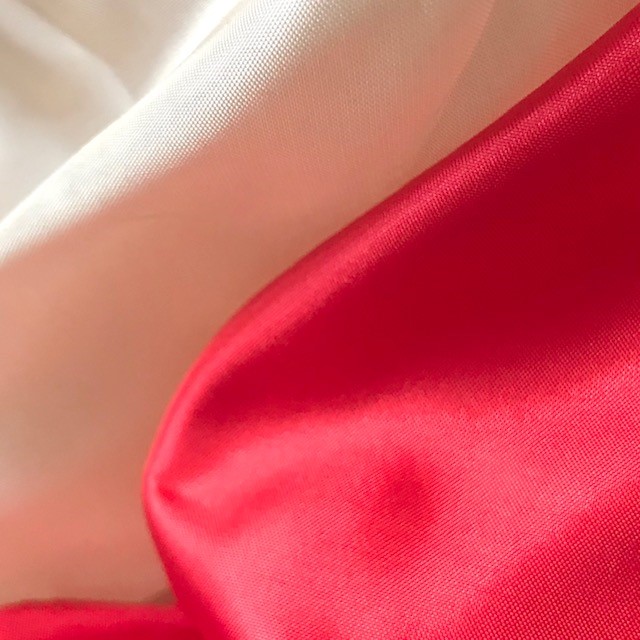
Satin is such a beautiful, luxurious fabric, which is why it’s often chosen for formal wear and home furnishings. Unfortunately, it can be hard to sew sometimes because it’s relatively slippery and lightweight. Luckily there are some easy solutions to satin sewing issues! To better understand this fabric, let’s discuss the types, how to sew it on a machine, tips to prevent fraying or damage and more.
What Is Satin?
Satin is both a kind of weave (that produces a shiny finish) and a type of fabric. The lustrous, almost liquid-like fabric known as satin is a very popular sewing material. Most satin that is commercially-available today is made from polyester, but it can also contain silk, nylon, cotton, or even wool. Satin ranges from relatively inexpensive lining to more pricey Duchess, Shantungs, and synthetic dupioni fabrics. Silk satin tends to be quite expensive, and synthetic polyester types more affordable. Today, satin is most commonly seen in clothing (like dresses) and in decor items (like curtains). Satin pillowcases are even popular for smoothing hair, preventing breakage, and being gentle on skin!
Satin Uses
One of the most standard ways to use satin fabric is for lining garments. This can be inside a suit, jacket, skirt, or any other kind of tailored garment (and sometimes more casual ones as well). Satin is preferred because it is soft on the skin, providing a layer between the outer fabric (often wool) and the wearer. Lining satin is available in many colors, with black, white, red, gold, and beige being the most commonly-used. Satin linings are meant to take the majority of “wear and tear” instead of the pricier outer material. Over time they might split or start to look worn, though most can be replaced.
All kinds of garments can be made from satin fabric. This includes trousers, blouses, skirts, dresses, and more. In particular, special-occasion garments are often made from high-end satin. For instance, elegant satin gowns are a popular choice for bridesmaids dresses.
Cutting Satin Fabric
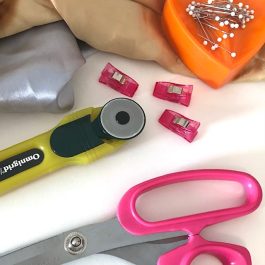
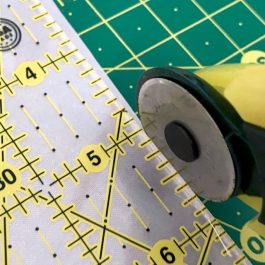
For the same reasons satin is so beautiful and luxurious, it is also delicate and can be slippery. Cut satin material out in single layers (instead of in double layers like most fabrics) to prevent errors. The choice of cutting tool is also very important when it comes to satin. Using a well-sharpened pair of fabric scissors or a rotary fabric cutting tool (plus a ruler and mat) are the best options. Dull scissors can fray satin and won’t give an accurate shape to pattern pieces.
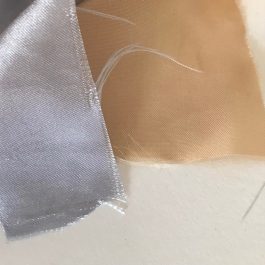
Avoiding Damage
Straight sewing pins can easily damage satin fabric, so very extra-fine ones are preferred. If you need to use pins, be sure that they are close to the edge and not outside the seam allowance area. Clips or magnetic sewing pins are other choices that can prevent the damage caused by traditional pins. Sewing weights are another option for holding satin in place.
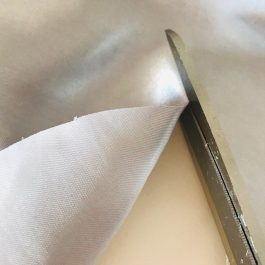
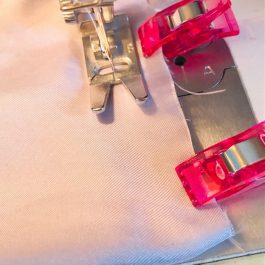
Fraying is also an issue when working with satin. Pinking shears that create a zigzag edge can keep this from happening. Overlocking satin before sewing is usually recommended, but skip this if it adds too much bulk to your seams. In almost all cases, be sure to keep a wide seam allowance. Satin can be ironed carefully but avoid steam as it can stain the material and leave watermarks.
Machine-Sewing Satin
The easiest way to sew satin is with a sewing machine. Hand-sewing can be too laborious for long seams and the stitches can often appear uneven. Pins, hand-needles, seam rippers, and safety pins can all easily mark or snag satin fabrics. That being said, draping and small details are sometimes done by hand with a needle and thread, though this more common for couture garments. French seams are often used to finish satin items and hide the raw edges.
A brand-new machine needle should be used for each satin project. This will ensure smooth sewing and keep the thread from pulling at the fabric. It’s always better to be accurate when sewing satin on the first try as using a seam ripper to remove mistakes can damage the fabric. A sharp, thin machine needle in sizes from 70/10 to 80/12 will produce the best results. For this reason, Microtex sharp needles are widely preferred when sewing satin. As for thread, polyester or cotton-wrapped polyester is recommend because it will pass easily through the satin’s fibers without leaving large holes.
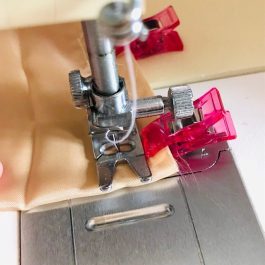
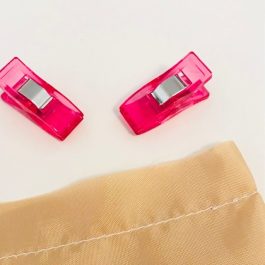
The machine’s settings are relatively standard for satin material. Straight stitches in lengths between 2-3 will work for most satins. When sewing, holding the left side of the fabric you are sewing taut will prevent bunching and gathering. If the fabric is still moving around excessively, some sewists like to use tissue paper underneath satin to prevent slippage. Create test swatches of the material to determine the correct stitches and settings for your fabric and machine.
Remember these tips for your next satin sewing project!
